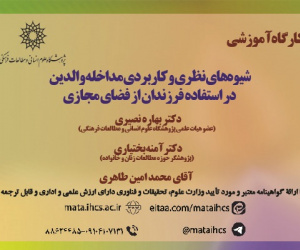شازده احتجاب: تاکسیدرمی زمان و تاریخ (مقاله علمی وزارت علوم)
درجه علمی: نشریه علمی (وزارت علوم)
آرشیو
چکیده
این مقاله در نظر دارد به واسطه مطالعه ژانر رمان، و به صورت خاص رمان شازده احتجاب اثر هوشنگ گلشیری شکلی از تاریخ نگاری را مورد مطالعه و نقد قرار دهد که به صورت مشخص نه تاریخ نگاری است و نه داعیه تاریخ نگاری دارد. به این منظور، با آوردن مقدماتی نشان داده ایم که ادبیات و بصورت خاص رمان، و در این مقاله رمان شازده احتجاب چگونه شکلی از تاریخ نگاری محسوب می شود. تاریخ نگاریِ رمان یا به بیان بهتر رمان-تاریخ نگاری نه بازتاب یا بازیابی گذشتیه عینی و تاریخ مشخص، بلکه این شکل از تاریخ-نگاری را به واسطه صورتبندی زمانی-مکانی«کرونوتوپ» درونی اثر ادبی مورد مطالعه قرار داده ایم. بر این اساس از نظریات میخاییل باختین در مقاله اقسام زمان و پیوستار زمانی-مکانی در رمان، به عنوان نگاه نظری و از مقاله حماسه و رمان به عنوان سنجیه تحلیل شکل تاریخ نگاری استفاده کرده ایم. بر این اساس، شکل زمانی-مکانی شازده احتجاب نشان می دهد که این داستان و به واسطه آن تاریخ نگاری حاصل از آن بر محوری از زمانی ایستا، بدون تغییر و حرکت استوار شده است.Prince Ehtjab: Taxidermy of time and history
This article aims to examine and critique a form of historiography that, although not explicitly historical, emerges through the study of literary genres, particularly the novel Prince Ehtejab by Houshang Golshiri. We demonstrate how literature, and specifically this novel, can be considered a form of historiography. Rather than reflecting or recovering an objective past or a specific history, this type of historiography is analyzed through the internal spatiotemporal structure, or "chronotope," of the literary work. For this purpose, Mikhail Bakhtin’s theories from his essay "Forms of Time and Chronotope in the Novel" serve as the theoretical framework, and his essay "Epic and Novel" is used as an analytical tool for examining the form of historiography. The spatiotemporal structure of Prince Ehtejab reveals that the story, and by extension the historiography it presents, is built around a static and unchanging notion of time, devoid of movement or transformation.The spatiotemporal structure of Prince Ehtejab reveals that the story, and by extension the historiography it presents, isThe spatiotemporal structure of Prince Ehtejab reveals that the story, and by extension the historiography it presents, is built around a static and unchanging notion of time, devoid of movement or transformation. built around a static and unchanging notion of time, devoid of movement or transformation.











